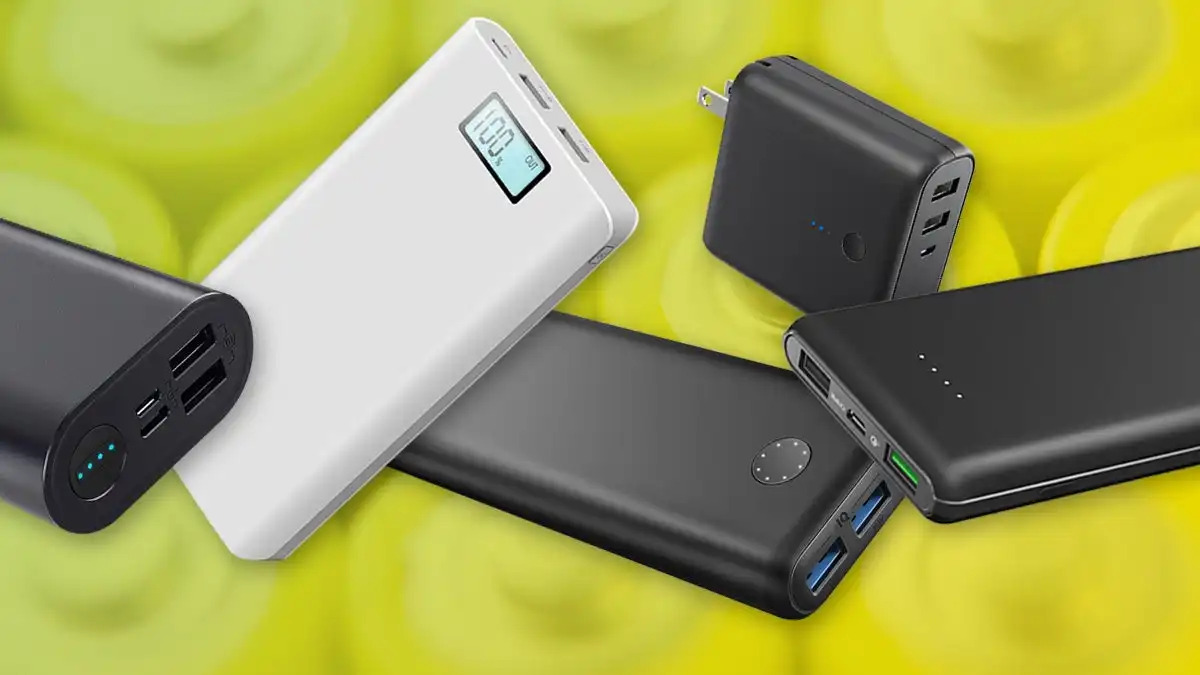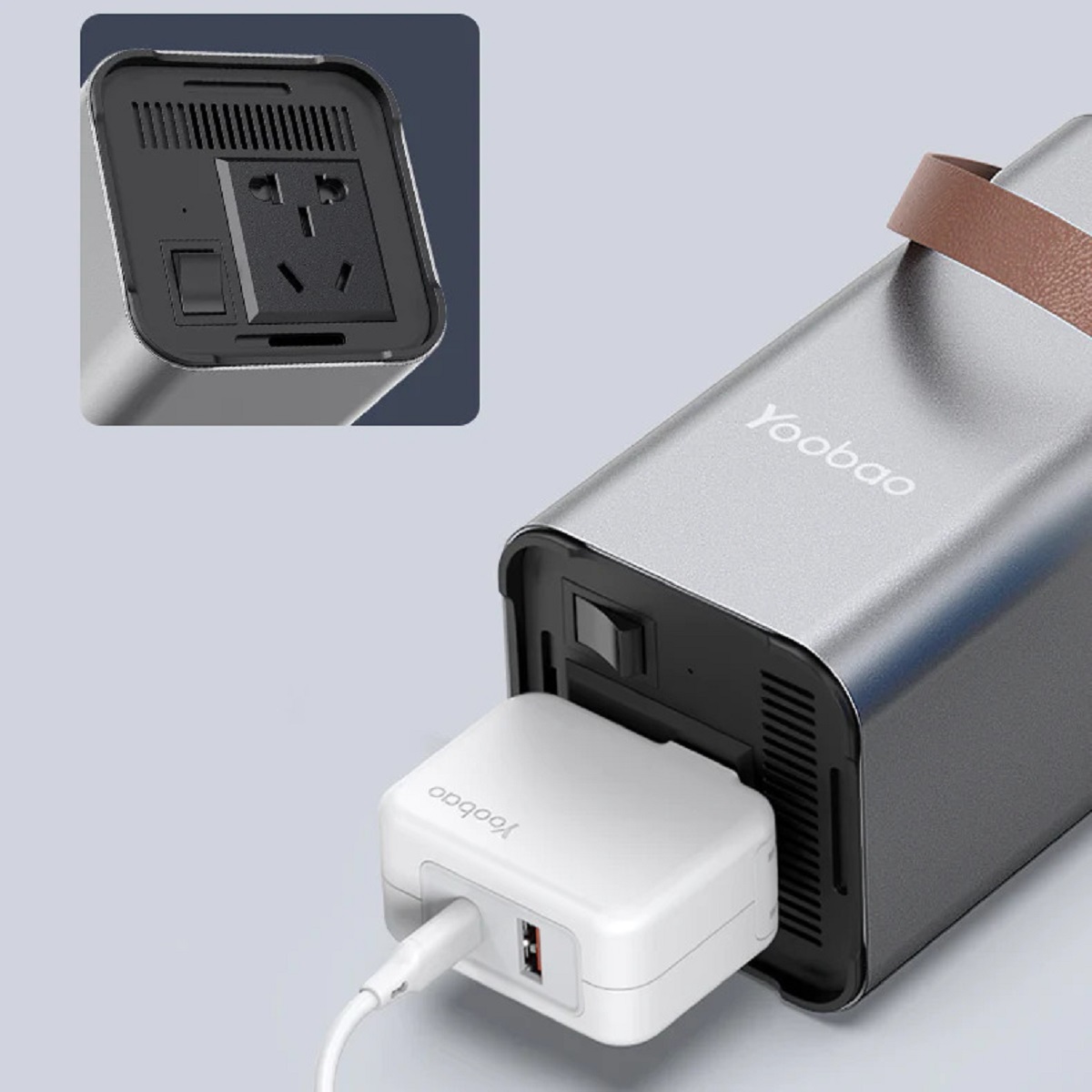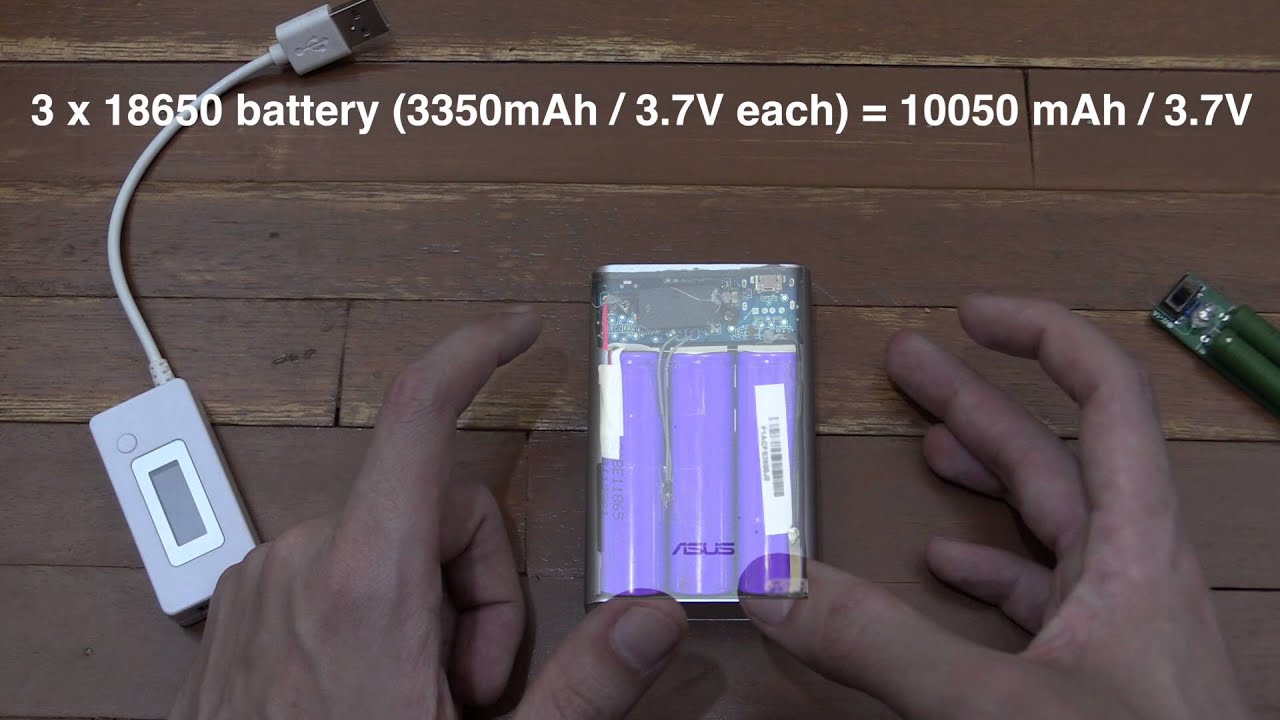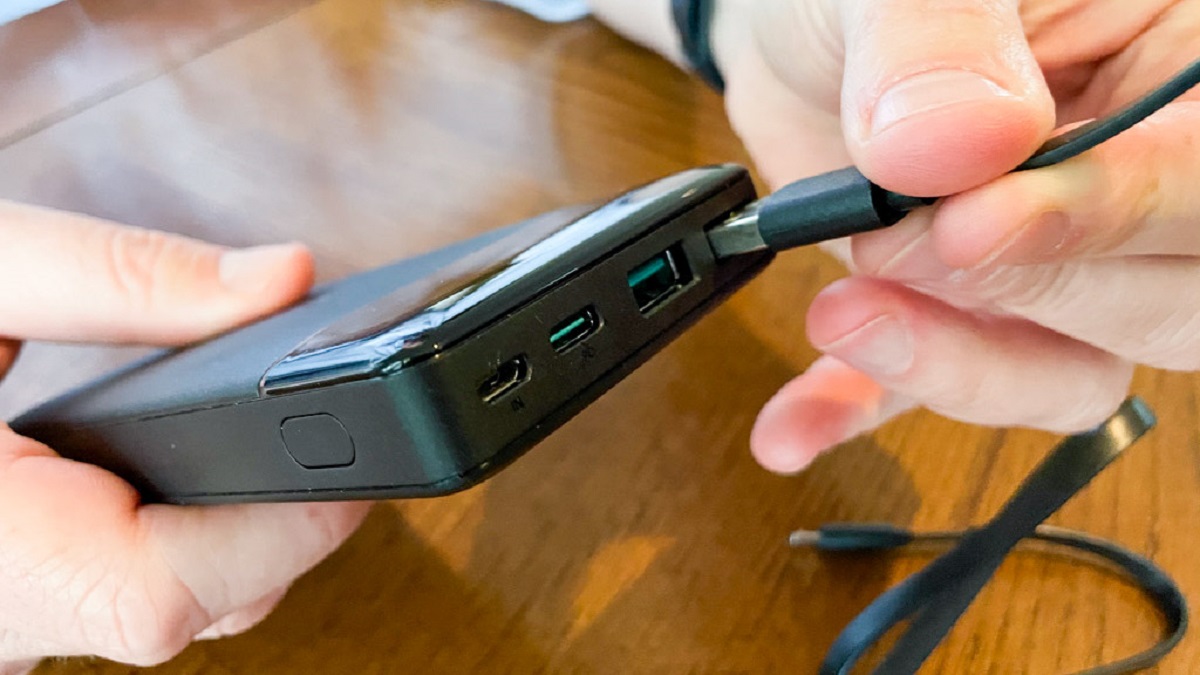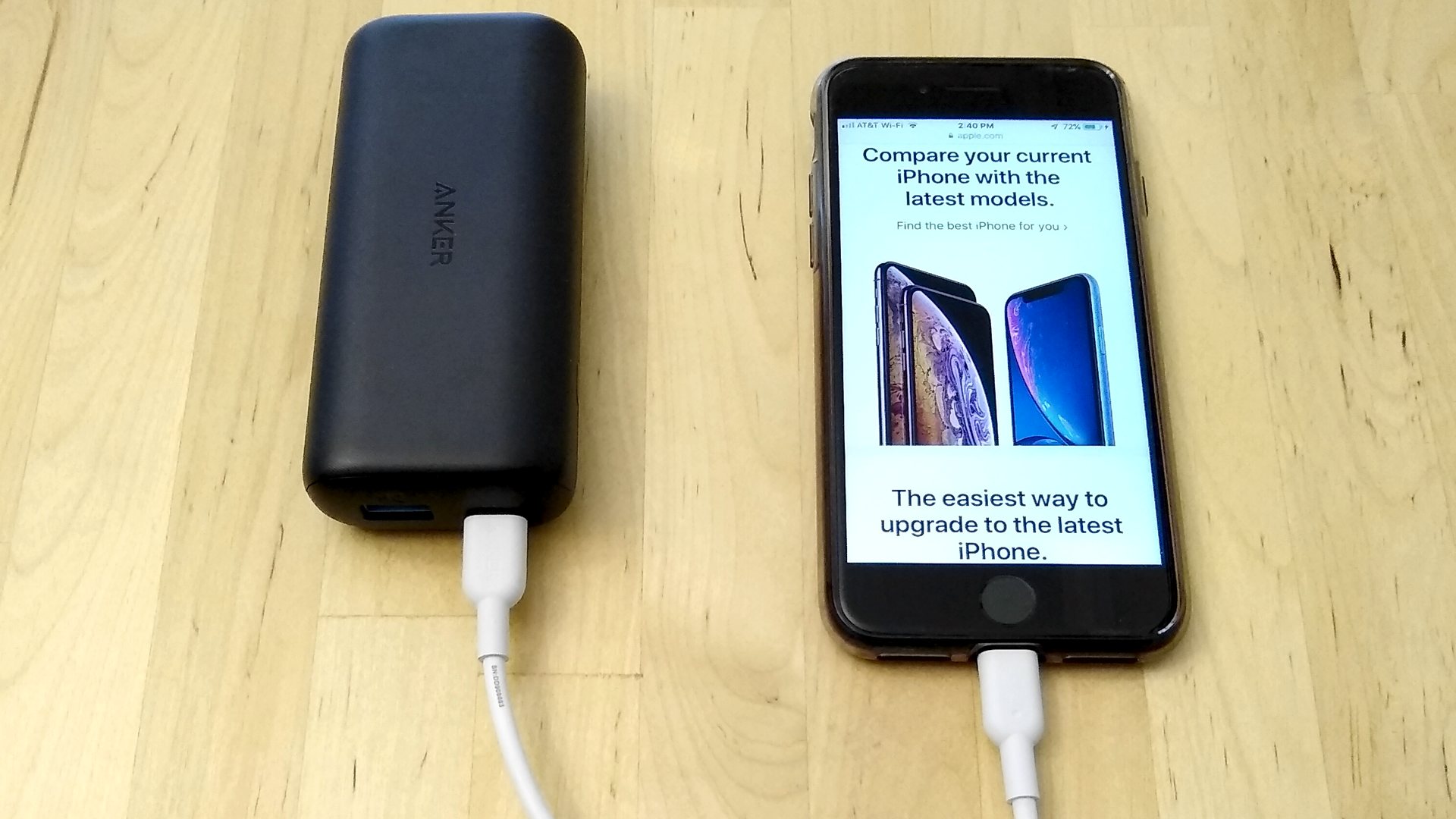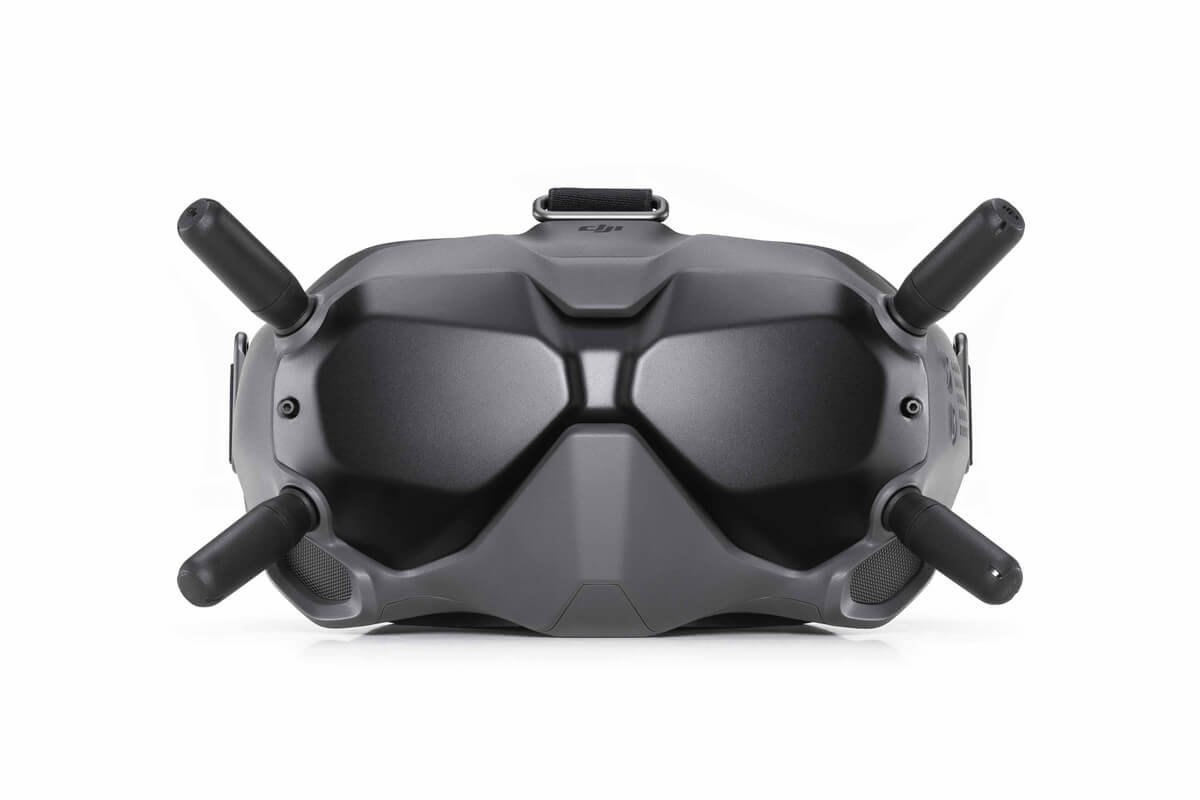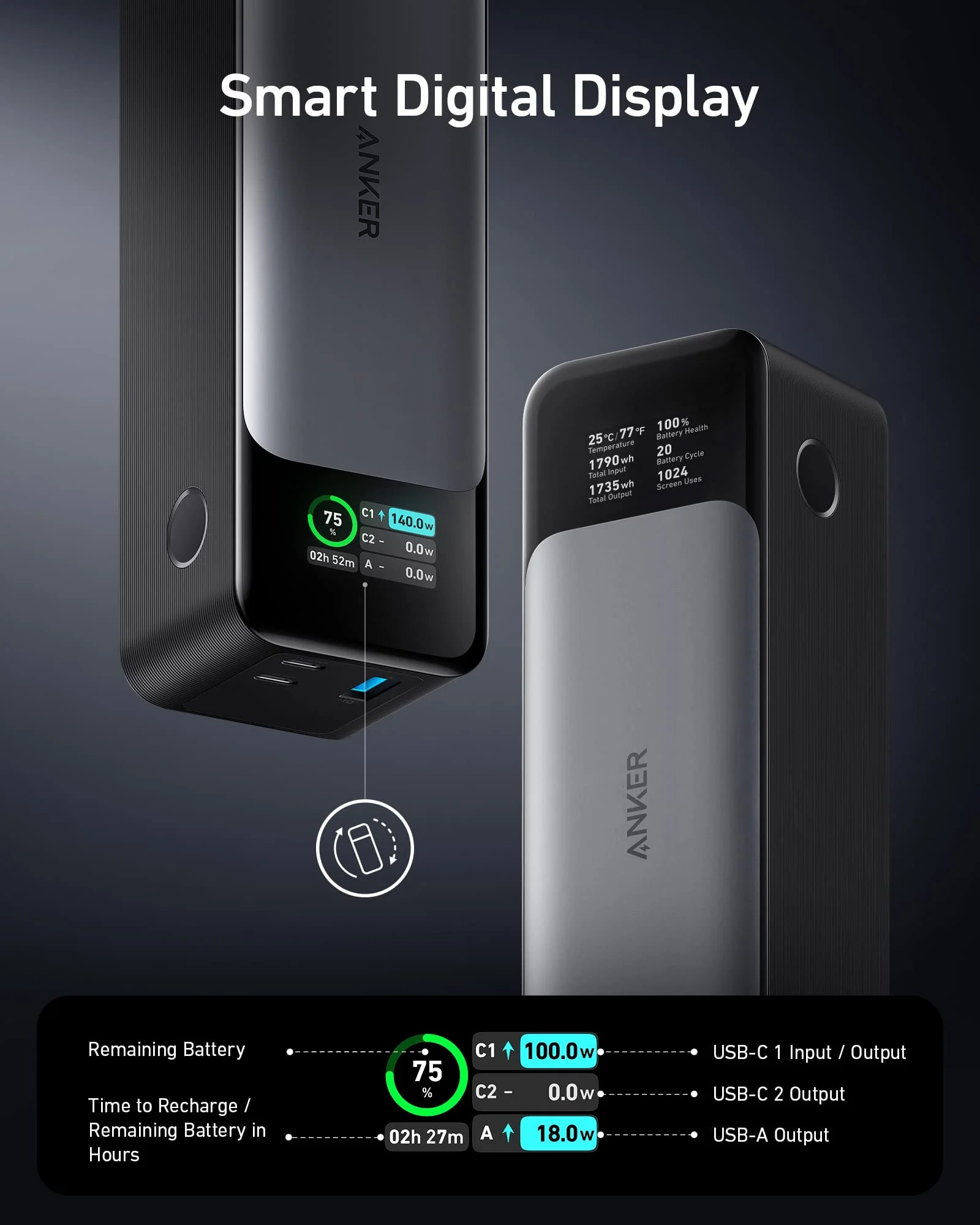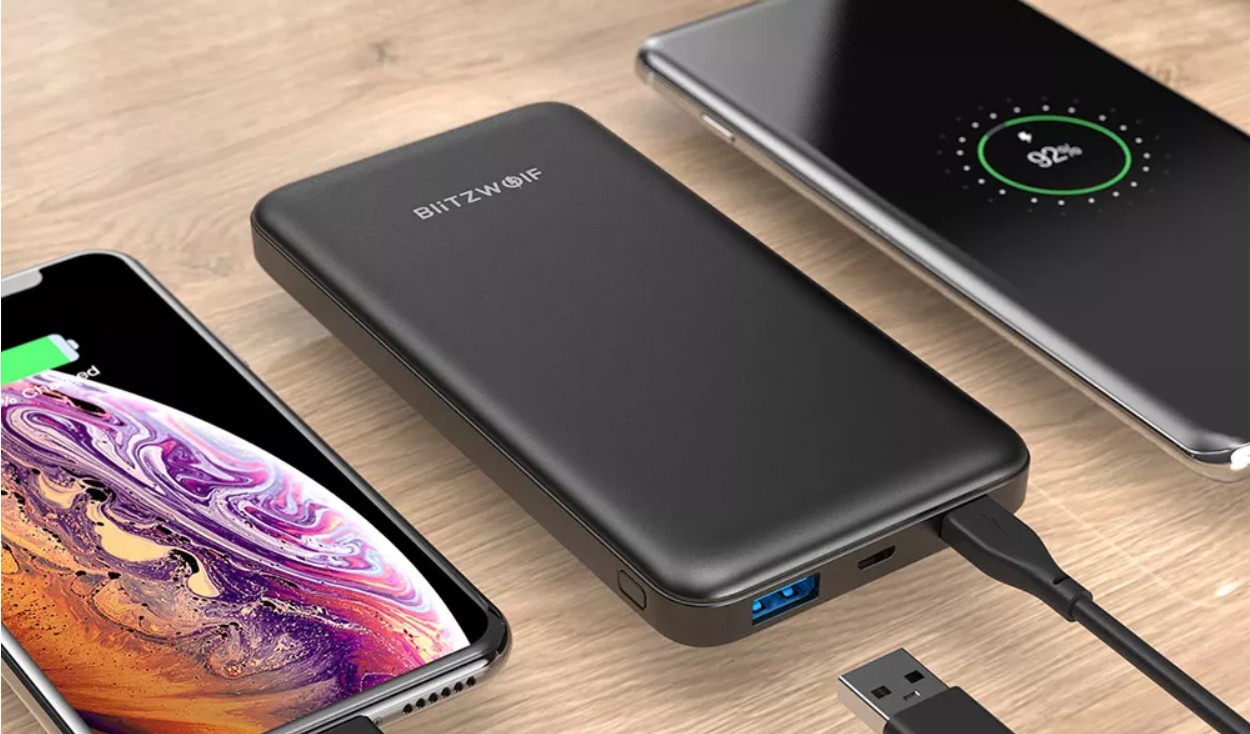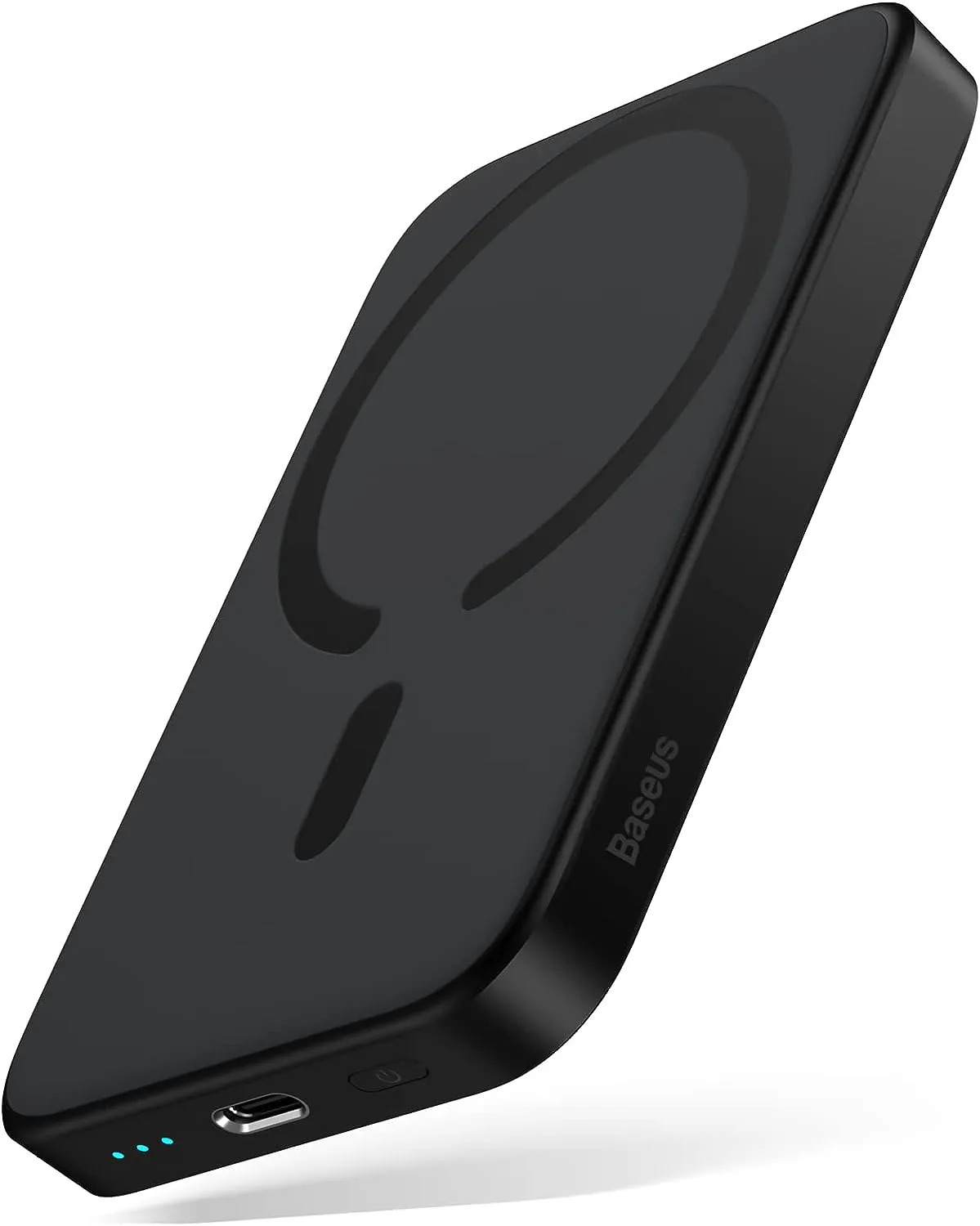Introduction
In today’s fast-paced digital world, portable electronic devices have become an essential part of our daily lives. Whether it’s our smartphones, tablets, or other gadgets, we rely heavily on them to stay connected, entertained, and productive. However, with their constant use, the need for a reliable power source becomes crucial, and that’s where power banks come in.
A power bank, also known as a portable charger, is a portable device that stores electrical energy and can be used to charge other devices on the go. It is a lifesaver when you’re traveling, attending meetings, or simply away from a power outlet. But the question arises: how do you know if your power bank is fully charged and ready to keep your devices juiced up?
In this article, we will explore different ways of determining if your power bank is fully charged. We will discuss factors to consider, such as LED indicator lights, using a multimeter, checking the battery icon on your device, and the average charging time. Additionally, we will provide tips on charging your power bank efficiently and address common questions related to power bank charging.
By the end of this article, you will have a clear understanding of how to determine if your power bank is fully charged, ensuring you have sufficient battery power for your devices whenever and wherever you need it.
Factors to Consider
When it comes to determining if your power bank is fully charged, there are several factors to consider. These factors can vary depending on the specific model and brand of your power bank, but there are some common indicators to look out for.
One of the main factors to consider is the presence of LED indicator lights on your power bank. These lights are typically located on the exterior of the device and provide useful information about the charging status. Most power banks feature multiple LED lights that correspond to different charging levels. For example, one light may indicate a low charge, while all lights illuminated signify a fully charged power bank. Checking the LED indicators is an easy way to get a quick visual confirmation of the charging status.
Another factor to consider is using a multimeter. A multimeter is a handy tool that can measure various electrical parameters, including voltage and current. To check if your power bank is fully charged, you can use a multimeter to measure the voltage output of the power bank. A fully charged power bank should have a voltage reading corresponding to its maximum capacity. Keep in mind that this method requires some technical knowledge and the use of proper safety precautions.
Furthermore, you can also check the battery icon on your device that is being charged by the power bank. Most devices, such as smartphones and tablets, display a battery icon on their screen, indicating the current battery level. When charging with a power bank, the battery icon should show an increasing charge level until it reaches 100%, indicating a fully charged device.
Additionally, considering the average charging time of your power bank is essential. While this can vary depending on the capacity and charging speed of your power bank, most power banks take several hours to fully charge. It’s recommended to refer to the user manual or manufacturer’s instructions to determine the typical charging time for your specific power bank model.
By taking these factors into account, you can get a better understanding of whether your power bank is fully charged and ready to provide a reliable power source for your devices. Remember that it’s always a good practice to follow the manufacturer’s guidelines and recommendations for charging your power bank to ensure optimal performance and longevity.
Checking the LED Indicator
One of the easiest ways to determine if your power bank is fully charged is by checking the LED indicator lights. LED lights are commonly found on the exterior of power banks and provide a visual representation of the charging status.
Each LED light on the power bank typically corresponds to a particular level of charge. For example, one LED light may indicate a low charge, while all lights illuminated signify a fully charged power bank. The exact number of LED lights and their meanings may vary depending on the specific model and brand of your power bank.
To check the LED indicator, make sure your power bank is connected to a power source and charging. The LED lights will typically start blinking or remain lit to indicate that the charging process is underway. As the power bank charges, you will notice the LED lights progressing from a lower charge level to a higher one.
As the charging continues, keep an eye on the LED lights. Once all the LED lights are lit or stop blinking, it indicates that your power bank is fully charged. At this point, you can disconnect the power bank from the power source and begin using it to charge your devices.
It’s important to note that the exact behavior of the LED lights may differ between power bank models. Some power banks may have a single LED light that changes color or blinks differently to indicate the charging status. Therefore, it’s advisable to refer to the user manual or manufacturer’s instructions specific to your power bank for accurate information about the LED indicator system.
Checking the LED indicator is a simple and reliable method to determine if your power bank is fully charged. It provides a clear visual representation of the charging status, allowing you to conveniently know when your power bank is ready to go.
Using a Multimeter
If you prefer a more precise method to determine if your power bank is fully charged, you can utilize a multimeter. A multimeter is a versatile tool that can measure various electrical parameters, including voltage, current, and resistance.
To use a multimeter to check the charging status of your power bank, you will need to set the multimeter to the voltage measurement mode. Make sure you have the appropriate probes connected to the multimeter for accurate readings.
First, ensure that your power bank is connected to a power source and actively charging. Once the charging process has been ongoing for some time, carefully insert the positive (red) probe of the multimeter into the positive (usually marked as “+”) terminal of the power bank. Then, insert the negative (black) probe of the multimeter into the negative (usually marked as “-“) terminal of the power bank.
Upon making the connections, the multimeter will display the voltage output of the power bank. If your power bank is fully charged, the voltage reading should approximate its maximum capacity, which can vary depending on the model. Refer to the user manual or manufacturer’s instructions specific to your power bank to determine the expected voltage range for a full charge.
If the voltage reading falls within the expected range, it indicates that your power bank is fully charged. Conversely, if the voltage displayed is significantly lower than the expected range, it suggests that the power bank is not yet fully charged, and you may need to wait longer for the charging process to complete.
Using a multimeter to check the voltage output provides a precise measurement of the charging status of your power bank. However, keep in mind that this method requires some technical knowledge and precautions, and it may not be necessary for the average user who just wants a quick confirmation of a fully charged power bank.
If you decide to use a multimeter, ensure that you follow the manufacturer’s instructions for safe operation and take necessary precautions to prevent electric shock. If you are uncertain about using a multimeter, it’s advisable to seek assistance from a knowledgeable individual or a professional.
Checking the Battery Icon on Your Device
Another convenient way to determine if your power bank is fully charged is by checking the battery icon on the device that is being charged. Most electronic devices, such as smartphones and tablets, display a battery icon on their screen, indicating the current battery level.
When using a power bank to charge your device, keep an eye on the battery icon as the charging process takes place. Initially, you will notice the battery icon displaying a low charge level, indicating that the device is being powered by the power bank rather than its internal battery.
As the charging progresses, the battery icon on your device should show an increasing charge level. Depending on the device and its operating system, this may be represented by a fillable battery icon, a numeric percentage, or both. The higher the charge level displayed, the closer your device is to being fully charged.
Once the battery icon reaches 100% or shows a full charge, it indicates that your device is fully charged, and by extension, your power bank has likely reached its full capacity as well. At this point, you can disconnect your device from the power bank and use it without relying on external power.
Checking the battery icon on your device provides a straightforward method of determining the charging status of both your device and the power bank. It eliminates the need for additional tools or indicators and allows you to easily monitor the progress of the charging process.
However, it’s worth noting that the accuracy of the battery icon may vary between devices. Factors such as the device’s battery health, operating system, and calibration can impact the precise representation of the charging status. To ensure the most accurate reading, it is recommended to use a reliable and properly calibrated device.
Overall, monitoring the battery icon on your device provides a user-friendly way to assess the charging status when using a power bank. It allows you to conveniently determine if your power bank is fully charged and-ready to keep your devices powered on the go.
Charging Time
When it comes to determining if your power bank is fully charged, considering the average charging time is paramount. While the charging time can vary depending on factors such as the capacity and charging speed of your power bank, there are some general guidelines to keep in mind.
Most power banks take several hours to fully charge. This duration can range from around 4 to 8 hours, depending on various factors. It’s important to note that different power banks have different charging rates, so it’s always recommended to refer to the user manual or manufacturer’s instructions specific to your power bank for precise charging time details.
To ensure optimal charging, it’s advisable to use the supplied charging cable and a compatible power source. Many power banks come with a micro-USB or USB-C cable that can be plugged into a computer, USB wall adapter, or any other USB power source. Using a USB wall adapter can often provide faster and more efficient charging compared to connecting to a computer or laptop.
Additionally, the charging time may also depend on the remaining capacity of the power bank when you begin charging. If the power bank is nearly depleted, it may take longer to reach a full charge. Conversely, if the power bank only has a small amount of remaining capacity, it could potentially charge quicker as it requires less time to reach its full capacity.
It’s worth noting that some power banks are designed with fast charging capabilities, allowing them to charge your devices at a higher speed. These power banks often have specific compatibility requirements, such as supporting Qualcomm Quick Charge or Power Delivery technology. If you have a fast-charging power bank, you may experience shorter charging times for your devices.
Monitoring the charging time of your power bank can give you a rough estimate of how long it usually takes to reach full charge. By keeping track of these times, you can better plan your charging routine and ensure that your power bank is ready when you need it the most.
Remember that patience is key when charging your power bank. It’s crucial to allow sufficient time for the power bank to reach its full capacity, ensuring optimal performance and longevity.
Charging with a USB Wall Adapter
When it comes to charging your power bank, using a USB wall adapter can often provide faster and more efficient charging compared to connecting it to a computer or laptop. A USB wall adapter is a device that plugs directly into a wall outlet and provides a dedicated power source for your power bank.
Using a USB wall adapter to charge your power bank offers several advantages. Firstly, it typically provides a higher power output compared to a computer or laptop USB port, resulting in faster charging times. USB wall adapters are designed to deliver a consistent and reliable power supply, optimizing the charging process.
To charge your power bank with a USB wall adapter, you will need to connect the supplied USB charging cable to the power bank and plug the other end of the cable into the USB wall adapter. Then, simply plug the USB wall adapter into a wall outlet. Once connected, the power bank will begin charging.
It’s important to ensure that the USB wall adapter you use is compatible with your power bank. Most power banks come with a recommended or supplied USB wall adapter, and it’s advisable to use the one provided by the manufacturer for optimal charging performance. However, if you need to use a different USB wall adapter, make sure it has the appropriate power output and is compatible with your power bank.
It’s worth noting that some power banks have specific charging requirements, such as supporting Qualcomm Quick Charge or Power Delivery technology. In such cases, you may need to use a USB wall adapter that supports these technologies to take full advantage of the fast charging capabilities of your power bank.
Charging your power bank with a USB wall adapter provides a convenient and efficient method to ensure your power bank is fully charged and ready to go. The consistent and reliable power supply from a USB wall adapter allows for faster and more reliable charging performance compared to other charging methods. By following the manufacturer’s guidelines and using a compatible USB wall adapter, you can maximize the charging efficiency of your power bank and ensure you always have a reliable power source for your devices.
FAQs
Q: Can I use my power bank while it is charging?
A: Yes, most power banks allow for simultaneous charging and discharging. This means you can continue using your devices while the power bank is connected to a power source and charging. However, keep in mind that the charging speed may be slightly reduced when the power bank is simultaneously discharging.
Q: How often should I charge my power bank?
A: It is recommended to charge your power bank at least once every few months, even if you’re not using it regularly. This helps maintain the overall health and performance of the battery and ensures that it remains functional when you need it.
Q: Can I overcharge my power bank?
A: Most modern power banks come equipped with built-in protection mechanisms to prevent overcharging and avoid damage to the battery. Once the power bank reaches its full capacity, it automatically stops charging. However, it is still advisable to unplug the power bank from the power source once it is fully charged to prolong its overall lifespan.
Q: Can I charge my power bank with a wireless charger?
A: Not all power banks are designed to support wireless charging. Wireless charging functionality depends on the specific model of the power bank and whether it includes a wireless charging pad or receiver. If your power bank supports wireless charging, you can use a compatible wireless charging pad or receiver to charge it wirelessly.
Q: How long does it take to charge a power bank from empty to full?
A: The charging time of a power bank varies depending on several factors, including the capacity of the power bank, the charging speed, and the power source. On average, it can take anywhere from 4 to 8 hours to fully charge a power bank. However, it’s always best to refer to the user manual or manufacturer’s instructions specific to your power bank for accurate charging time details.
Q: Can I charge multiple devices with my power bank simultaneously?
A: Yes, many power banks are equipped with multiple USB ports, allowing you to charge multiple devices simultaneously. However, keep in mind that charging multiple devices at once may affect the overall charging speed and may drain the power bank’s battery more quickly.
These are some common questions related to power bank charging. If you have any specific concerns or additional questions about your power bank, it is recommended to refer to the manufacturer’s instructions or reach out to their customer support for further assistance.
Conclusion
Knowing if your power bank is fully charged is crucial to ensure that you always have a reliable power source for your devices when you need them. By considering factors such as LED indicator lights, using a multimeter, checking the battery icon on your device, and understanding the average charging time, you can easily determine if your power bank is fully charged and ready to go.
The LED indicator lights on your power bank provide a visual representation of the charging status, allowing for a quick and easy check. Using a multimeter offers a more precise measurement of the voltage output of your power bank, providing an accurate determination of the charging status. Checking the battery icon on your device provides a user-friendly way to monitor the charging progress, ensuring that your power bank and device are fully charged. Considering the average charging time of your power bank helps to plan your charging routine effectively.
Remember to follow the manufacturer’s guidelines and recommendations for charging your power bank to ensure optimal performance and longevity. Utilizing a USB wall adapter can offer faster and more efficient charging compared to other methods. Additionally, addressing frequently asked questions clarifies common queries related to power bank charging.
With these insights and techniques in mind, you can confidently determine if your power bank is fully charged and ready to keep your devices powered wherever you go. Enjoy the convenience and peace of mind that comes with a fully charged power bank!







